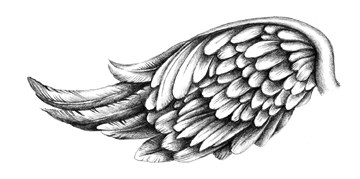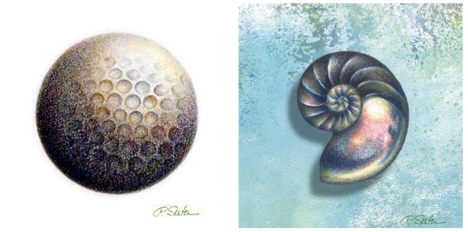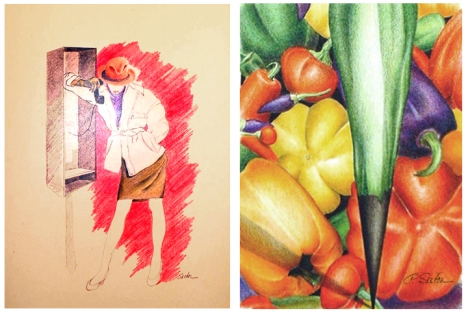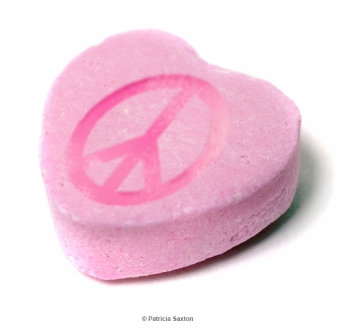One of the great American painters, Winslow Homer (1836 ~ 1910), has his own US postal stamp. I’m glad to see it. Despite post office troubles, there’s still something quite honorable about what goes on a stamp.
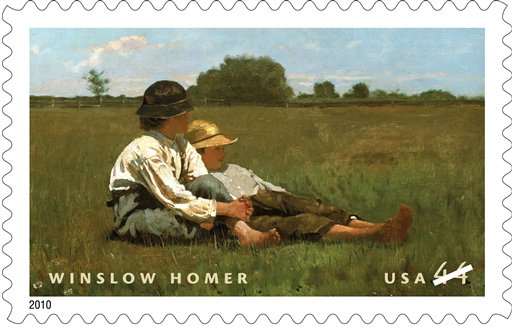
Looking at this piece, so reminiscent of less complicated times, feels somehow exuberantly refreshing in today’s world.
The stamp, a reproduction of his 1874 painting “Boys in a Pasture”, was revealed a few days ago at the Maine’s Portland Museum of Art, in conjunction with an exhibit of 28 of Homer’s watercolor and oil paintings.
To see more of his work, here’s a nice slide show from the National Gallery of Art.
……………………………………………….
And in case you want to know more…*
Winslow Homer was born in Boston, Massachusetts, in 1836, the second of the three children, all sons, of Henrietta Benson and Charles Savage Homer.
At the age of 19, Homer apprenticed with the J. H. Bufford’s lithographic firm in Boston. Although the superior quality of his work earned him more and more responsibility, he found the work stifling and tedious, and upon attaining his majority he left the shop to become a freelance illustrator.
In 1859 Homer moved to New York City, where he studied briefly at the National Academy of Design, took a few painting lessons with Frederic Rondel, and set up a studio at the 10th Street Studio Building. For the next 17 years, his major source of income came from drawings for illustrated weekly magazines, such as Harper’s Weekly, Frank Leslie’s Illustrated Weekly Newspaper, and Appleton’s Journal.
He devoted increasing attention to painting, however, and in 1865 was elected a member of the National Academy of Design and was further distinguished by the exhibition of his Prisoners at the Front in the Paris Exposition of 1866. Homer went to Paris that year, but little is known of his activities during the ten months he spent abroad.
Domestic travel for the next 15 years included trips to the White Mountains in the summers of 1868 and 1869, the Adirondacks, and Gloucester, Massachusetts, in 1873. In 1875 he submitted his last drawing to Harper’s Weekly, ending his career as an illustrator. He traveled widely in the 1870s in New York State, to Virginia, and Massachusetts, and in 1881 he began a two-year stay in England, living in Cullercoats, near Newcastle.
(According to another bio, it is significant that, when Homer returned to Europe in 1881, he did not go back to Paris, which was bursting with American art students at the ateliers. He chose, instead, the small fishing community of Tynemouth, on the cold gray northeast coast of England.)
Returning to America in 1883, he settled on the rugged coast of Prout’s Neck, Maine, where he would live for the rest of his life. He continued to travel widely, to the Adirondacks, Canada, Bermuda, Florida, and the Caribbean, in all those places painting the watercolors upon which much of his later fame would be based.
In 1890 he painted the first of the series of seascapes at Prout’s Neck (the most admired of his late oil paintings). Homer died in his Prout’s Neck studio on September 30, 1910.
* References: http://whitemountainart.com/Biographies/bio_wh.htm and http://www.nga.gov/cgi-bin/pbio?15100








